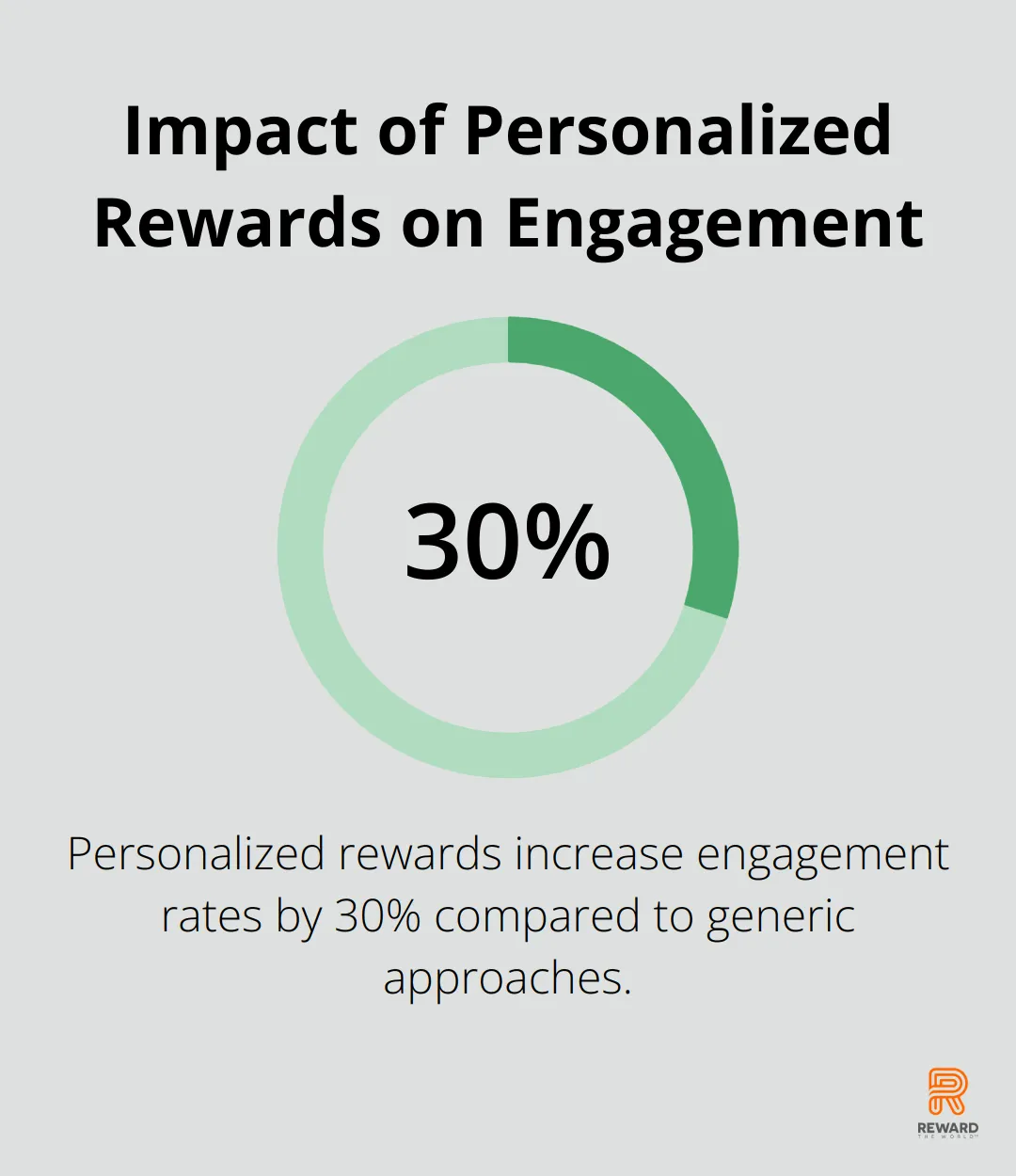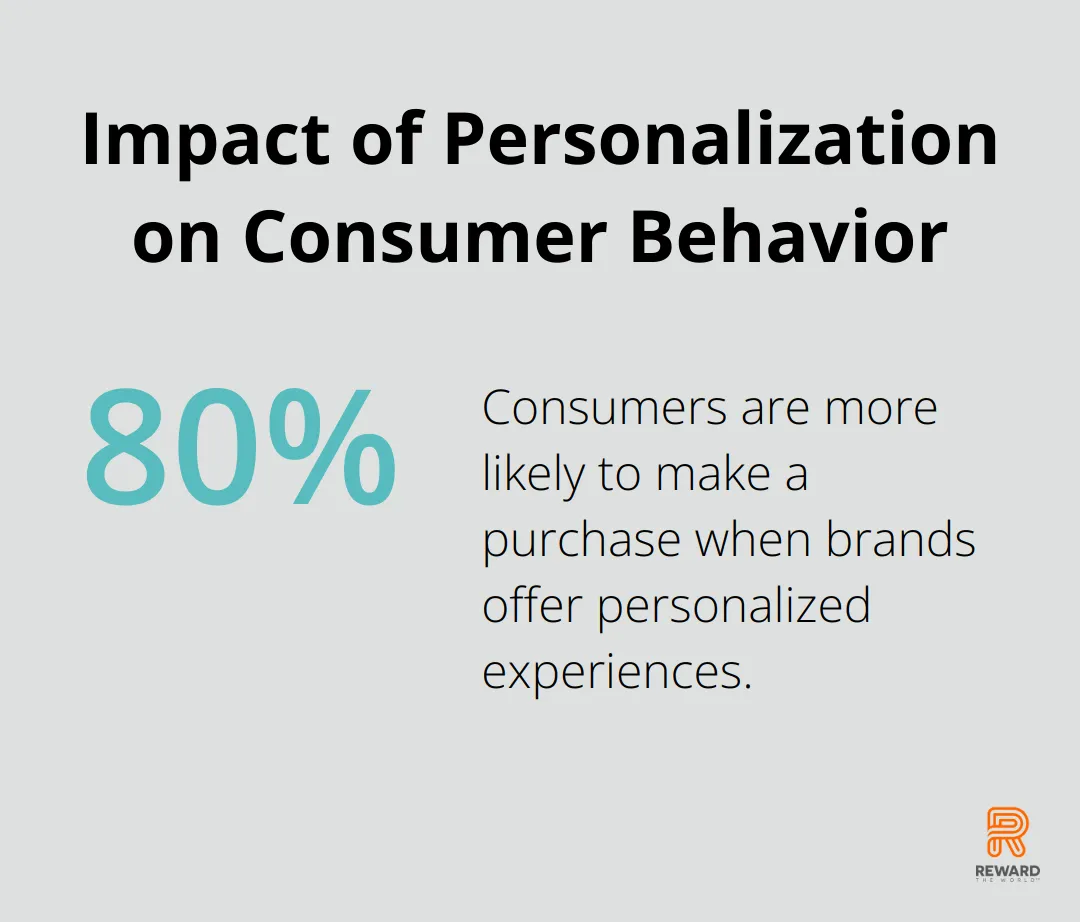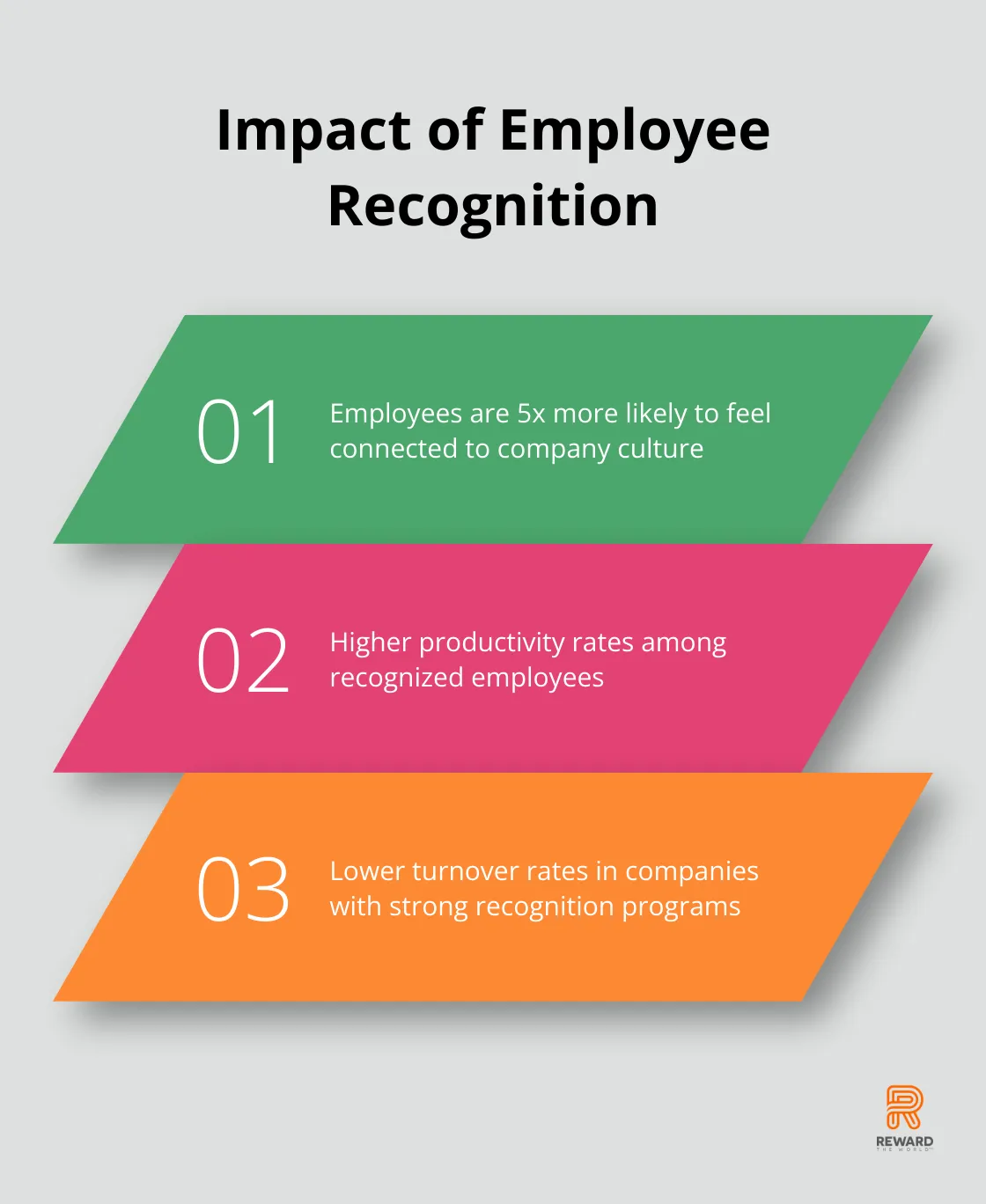
Rewards have the power to shape behavior, foster loyalty, and create lasting connections. At Reward the World, we’ve seen firsthand how well-designed reward programs can transform relationships between businesses and their customers or employees.
Emotional branding through rewards taps into the psychological drivers that motivate people, creating a deeper bond between individuals and organizations. This blog post explores the science behind rewards and how they can be leveraged to build stronger, more meaningful connections in both customer and employee relationships.
What Drives Our Reward-Seeking Behavior?
The Brain’s Reward System
Rewards act as powerful motivators that shape our actions and decisions. The brain’s reward system, driven by the neurotransmitter dopamine, lies at the core of this influence. When we receive a reward, our brain releases dopamine, creating a feeling of pleasure and reinforcing the behavior that led to the reward.
The Anticipation Effect
Studies show that dopamine release doesn’t just occur when we receive a reward, but also in anticipation of one. This explains why the mere possibility of a reward can highly motivate us. Research suggests that the anticipation and detection of expected positive experiences activate seeking motivation, which instigates and reinforces exploratory behavior in novel environments.
The Power of Immediate Gratification
The timing of rewards significantly impacts their effectiveness. Immediate rewards tend to motivate more powerfully than delayed ones (a phenomenon known as temporal discounting). A study by the University of Pennsylvania found that people will accept a smaller reward now rather than wait for a larger one later. This insight proves crucial for businesses designing reward programs.
Different Rewards, Different Impacts
Not all rewards are created equal. Different types of rewards can have varying impacts on behavior:
- Monetary Rewards: Cash or gift cards appeal universally but can lead to diminishing returns over time.
- Social Rewards: Recognition from peers or superiors can motivate highly, especially in workplace settings.
- Experiential Rewards: Unique experiences or exclusive access can create lasting memories and stronger emotional connections.
- Progress-Based Rewards: Achievements or levels in gamified systems tap into our innate desire for growth and mastery.
Recent studies reveal that tangible rewards often outperform cash incentives in motivating greater effort and commitment from individuals.
The Personalization Advantage
The effectiveness of rewards increases dramatically when they’re personalized. A study by the Aberdeen Group found that companies using personalized rewards saw a 240% improvement in annual company performance compared to those using generic rewards.
Personalized rewards can increase engagement rates by up to 30% compared to one-size-fits-all approaches. Platforms that offer a vast array of reward options across different categories (like Reward the World) ensure that businesses can cater to individual preferences effectively.

Understanding the psychology of rewards empowers businesses to build deeper connections with customers and employees. This knowledge forms the foundation for creating more effective reward programs that drive desired behaviors and foster lasting relationships. The next section will explore how businesses can leverage these insights to enhance customer loyalty and drive repeat purchases.
How Rewards Boost Customer Loyalty
The Power of Personalization
Personalization transforms reward programs from generic to impactful. Research from Epsilon indicates that 80% of consumers are more likely to make a purchase when brands offer personalized experiences. This principle applies equally to reward programs.

To create personalized rewards:
- Analyze customer data to understand individual preferences and purchasing patterns.
- Offer a diverse range of rewards that cater to different interests and demographics.
- Use AI-driven algorithms to suggest relevant rewards based on past behavior.
Platforms with a vast array of rewards across various categories enable businesses to offer highly personalized incentives that resonate with each customer.
Instant Gratification: A Game-Changer
In today’s fast-paced world, customers expect instant gratification.
To leverage instant gratification:
- Implement real-time reward delivery systems.
- Offer immediate discounts or points that can be redeemed instantly.
- Send instant notifications when rewards are earned or available.
Instant reward delivery systems (spanning eGift cards and cash payments) tap into this psychological need for immediate reinforcement.
Driving Repeat Purchases
Effective reward programs don’t just encourage one-time purchases-they foster long-term loyalty. A recent Bain survey found that despite increased customer success investments, net revenue retention rates have declined for 75% of software firms.
To use rewards for driving repeat purchases:
- Implement tiered reward systems that offer increasing benefits for loyal customers.
- Create referral programs that reward customers for bringing in new business.
- Offer exclusive experiences or early access to new products for top-tier customers.
Cultivating Brand Advocates
The ultimate goal of a reward program is to turn customers into brand advocates. These loyal customers not only make repeat purchases but also promote the brand to others.
Try these strategies to cultivate brand advocates:
- Provide exceptional customer service (a key factor in turning satisfied customers into advocates).
- Offer rewards for social media engagement and user-generated content.
- Create a community around your brand where customers can interact and share experiences.
Measuring and Optimizing Reward Programs
To ensure the effectiveness of a reward program, businesses must continuously measure and optimize their strategies. Key metrics to track include:
- Customer Lifetime Value (CLV)
- Redemption rates
- Customer satisfaction scores
- Net Promoter Score (NPS)
Regular analysis of these metrics allows businesses to refine their reward strategies and maximize their impact on customer loyalty.
As we shift our focus from customer loyalty to employee motivation, it’s important to note that many of the same principles apply. The next section will explore how businesses can use rewards to boost employee engagement and productivity.
How Rewards Boost Employee Engagement
The Impact of Recognition
Employee recognition drives engagement. A Gallup study found that when recognition hits the mark, employees are five times as likely to be connected to company culture. This connection results in higher productivity and lower turnover rates.

To harness recognition:
- Start a peer-to-peer recognition program
- Celebrate big wins and small victories
- Make recognition public and timely
Personalized Rewards
Employee rewards should not follow a one-size-fits-all approach. A recent study revealed that retaining talented employees (81%) is one of the top reasons for incentive travel. Offering diverse options ensures each employee finds something meaningful.
Performance-Linked Rewards
Tying rewards to specific performance metrics creates a clear path for employees to earn recognition. This approach motivates employees and aligns their efforts with company goals.
To implement performance-based rewards:
- Set clear, measurable objectives
- Communicate the reward structure transparently
- Review and adjust metrics regularly
Measuring Reward Program Effectiveness
Companies must track key metrics to ensure the effectiveness of their reward programs. A recent report emphasizes the critical importance for total rewards professionals to demonstrate the ROI of their programs and offerings.
Key metrics to monitor include:
- Employee engagement scores
- Productivity levels
- Retention rates
- Net Promoter Score (NPS)
Technology in Reward Programs
Modern reward platforms leverage technology to streamline the process of recognizing and rewarding employees. These platforms offer real-time recognition, data analytics, and seamless integration with existing HR systems.
A comprehensive reward platform allows companies to:
- Automate reward distribution
- Gain insights into program effectiveness
- Ensure consistent recognition across departments and locations
Implementing an effective employee reward program creates a culture of appreciation and motivation. Personalizing rewards, linking them to performance, and using technology can significantly boost employee engagement, productivity, and retention.
Final Thoughts
Rewards have proven to be a powerful tool for building deeper connections between businesses and their stakeholders. From shaping customer behavior to boosting employee engagement, well-designed reward programs tap into fundamental psychological drivers that motivate and inspire. The science behind rewards reveals their potential to create lasting emotional bonds, fostering loyalty and driving positive outcomes for organizations.
As we look to the future, reward programs will become more sophisticated and personalized. Advanced data analytics and AI will enable businesses to tailor rewards with unprecedented precision, maximizing their impact on individual recipients. We’ll likely see a shift towards more experiential and socially conscious rewards, reflecting changing consumer values and preferences.
At the forefront of this evolution is Reward the World, a cutting-edge global incentives platform that’s transforming the rewards landscape. With its vast array of personalized rewards and leveraging of advanced analytics, the platform enables companies to craft reward experiences that resonate on a deeper level with recipients. Reward the World’s innovative approach aligns perfectly with the principles of emotional branding, creating meaningful connections between businesses and their audiences.
